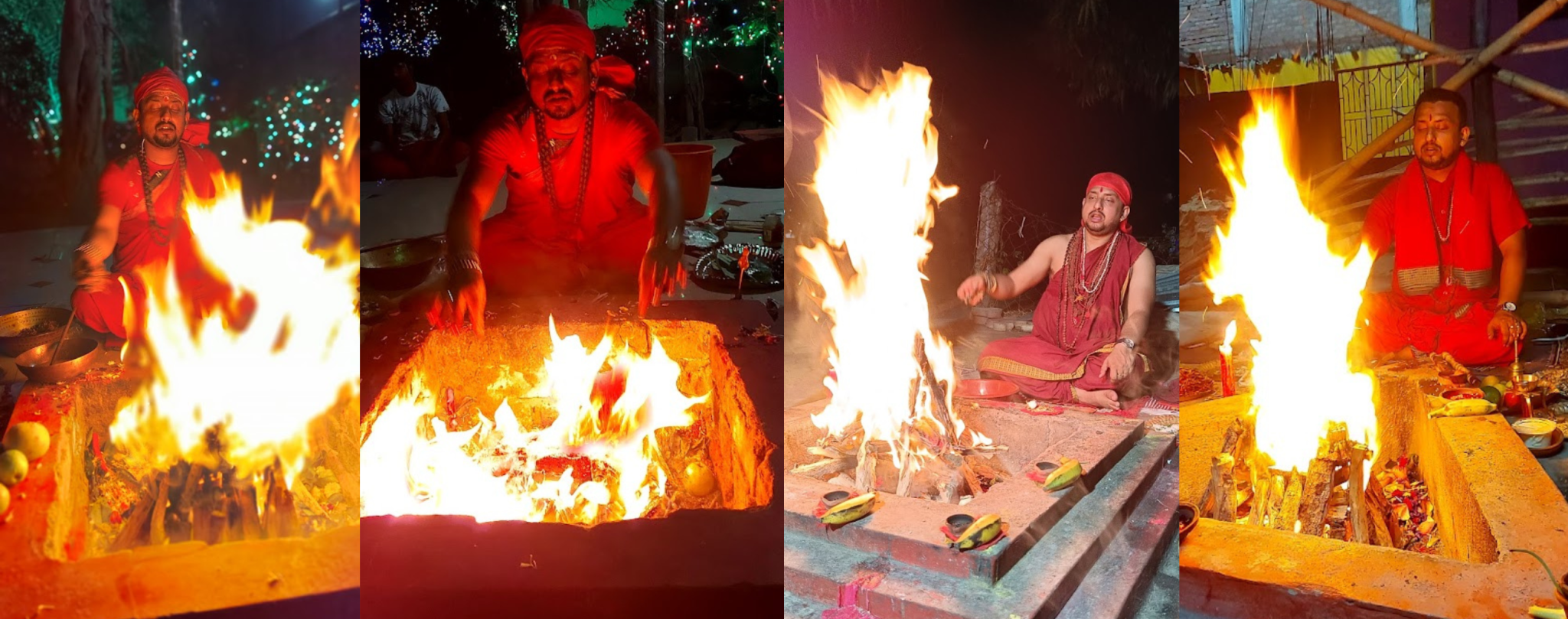
Priests : Guardians of Tradition
Priests, often referred to as Pandits or Acharyas, play a crucial role in Hindu religious practices. They are responsible for performing rituals, ceremonies, and offering spiritual guidance to devotees.
Key Roles And Responsibilities Of Hindu Priests Include:
Performing rituals: Priests conduct various religious rituals, such as puja (worship), yagnas (fire ceremonies), and shanti (peace rituals).
Offering guidance: They provide spiritual guidance and counseling to individuals and communities.
Interpreting scriptures: Priests are well-versed in Hindu scriptures, including the Vedas, Upanishads, and Bhagavad Gita.
Teaching religious texts: They often teach religious texts and practices to students and devotees.
Preserving traditions: Priests help preserve and transmit Hindu traditions and customs to future generations.
(All Types Of Vedic & Mangolik Rituals Done Here)
Vedik Puja : A Divine Ritual
Vedic Puja is a Hindu ritual performed as a form of worship to deities. It is rooted in the ancient Vedic texts and involves a series of carefully prescribed steps and mantras. The goal of Vedic Puja is to invoke the divine presence and seek blessings for various aspects of life, such as health, wealth, and happiness.
Vedic Religion:
The religion of the ancient Indo-European-speaking peoples who entered India around 1500 BCE. The Vedic religion is named after the Vedas, which are collections of sacred texts.
Vedic Rituals:
Some examples of Vedic rituals include the Soma rituals, fire rituals, and the Ashvamedha (horse sacrifice).
Vedic Tradition:
The teachings and experiences of sages who lived in ancient India. During the Vedic era, there was no organized religion.
Key elements of Vedic Puja include:
- Invocation: The ritual begins with invoking the deity to be worshipped.
- Purification: The worshipper and the surroundings are purified using water, incense, and other sacred materials.
- Offering: Various offerings, such as flowers, fruits, and food, are presented to the deity as a symbol of devotion.
- Mantras: Sacred chants and mantras are recited to invoke the deity’s blessings.
- Arati: A waving of lighted lamps or incense sticks before the deity as a sign of reverence.
- Prasad: The blessed food or offerings are distributed among the worshippers as a sign of divine grace.
Vedic Puja can be performed individually or collectively, and the specific rituals may vary depending on the deity being worshipped and the occasion. It is often performed by a qualified priest or Brahmin, but it can also be performed by individuals with proper guidance.
Mangalik Puja: A Ritual for Planetary Harmony
Mangalik Puja is a Hindu ritual performed to mitigate the potential negative effects of Mars (Mangal) in a person’s birth chart. According to Vedic astrology, Mars is considered a “Manglik” if it is located in the 1st, 2nd, 4th, 7th, 8th, or 12th house of the birth chart.
It is believed that individuals with Manglik dosha (Mars affliction) may face challenges in relationships, particularly marriage. To alleviate these potential difficulties, Mangalik Puja is performed to appease the planet Mars and seek its blessings.
Key elements of Mangalik Puja include:
- Astrological analysis: A qualified astrologer analyzes the individual’s birth chart to determine the presence and severity of Manglik dosha.
- Rituals: Various rituals are performed to appease Mars, such as havan (fire ceremony), mantra chanting, and offering prayers.
- Remedies: Specific remedies may be recommended, such as wearing certain gemstones or performing specific acts of charity.
Mangalik Puja can be performed by individuals or families, and the specific rituals may vary depending on the astrologer’s recommendations. It is important to consult with a qualified astrologer for accurate guidance and tailored remedies.
Please note that while Mangalik Puja is a popular practice, there is no scientific evidence to support its effectiveness. The belief in Manglik dosha and its associated remedies is based on traditional astrological principles and cultural beliefs.
(All Types Of Grah Puja And Tantra Puja Done Here)
Grah Puja : Worshiping the Celestial Bodies
Grah Puja is a Hindu ritual performed to worship the nine celestial bodies, known as “Navagraha,” in Vedic astrology. These nine celestial bodies are believed to influence various aspects of human life, including health, wealth, relationships, and career.
The nine Navagraha are:
- Sun (Surya)
- Moon (Chandra)
- Mars (Mangal)
- Mercury (Budh)
- Jupiter (Guru)
- Venus (Shukra)
- Saturn (Shani)
- Rahu (North Node)
- Ketu (South Node)
Grah Puja is performed to seek the blessings of these celestial bodies and to mitigate any negative influences they may have on an individual’s life. It is believed that by appeasing the Navagraha, one can achieve harmony, success, and well-being.
Key elements of Grah Puja include:
- Astrological analysis: An astrologer analyzes the individual’s birth chart to identify any planetary afflictions or imbalances.
- Rituals: Various rituals are performed to appease the Navagraha, such as havan (fire ceremony), mantra chanting, and offering prayers.
- Remedies: Specific remedies may be recommended, such as wearing certain gemstones or performing specific acts of charity.
Grah Puja can be performed by individuals or families, and the specific rituals may vary depending on the astrologer’s recommendations. It is important to consult with a qualified astrologer for accurate guidance and tailored remedies.
Please note that while Grah Puja is a popular practice, there is no scientific evidence to support its effectiveness. The belief in the influence of the Navagraha and the associated rituals is based on traditional astrological principles and cultural beliefs.
Tantra Puja: A Mystical Ritual
Tantra Puja is a complex ritual rooted in Tantric traditions of Hinduism and Buddhism. It is a form of spiritual practice that involves the use of mantras, yantras (sacred diagrams), mudras (hand gestures), and other techniques to connect with the divine and achieve spiritual enlightenment.
Key elements of Tantra Puja include:
- Mantra recitation: Powerful mantras are chanted repeatedly to invoke the divine energy and achieve spiritual transformation.
- Yantra worship: Yantras, intricate geometric diagrams, are used as a focal point for meditation and energy concentration.
- Mudra practice: Specific hand gestures are performed to channel and direct energy.
- Mandala creation: Mandalas, symbolic representations of the universe, are often used in Tantra Puja.
- Offerings: Various offerings, such as flowers, food, and incense, may be presented to the deity or divine energy being invoked.
Tantra Puja can be a highly personal and transformative practice. It requires a deep understanding of Tantric principles and may involve advanced techniques that are not suitable for everyone.
It is important to note that Tantra Puja should be practiced under the guidance of a qualified teacher or guru. Improper practice can lead to negative consequences, both physically and spiritually.
